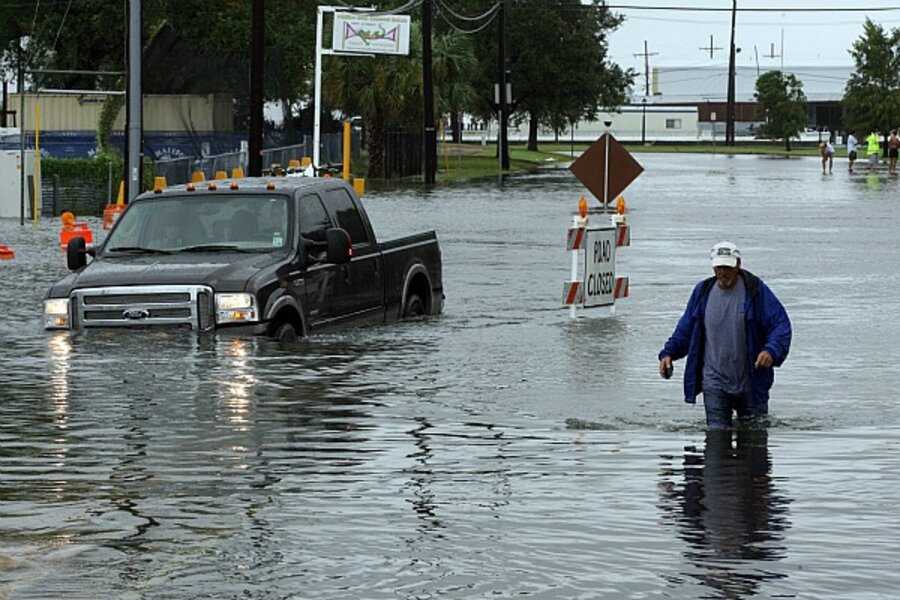Tropical storm Lee: 'Don't go to sleep on this storm.' (VIDEO)
Loading...
Although tropical storm Lee is no Irene, residents along the Gulf Coast remain wary of their first major test since Katrina caused such devastation six years ago.
“We’re not out of the woods,” New Orleans Mayor Mitch Landrieu warned Saturday. “Don't go to sleep on this storm.”
According to the National Hurricane Center’s Sunday morning report, Lee was located over Vermilion Bay, La., about 125 miles west-southwest of New Orleans and drifting northeast at 3 miles per hour with maximum sustained winds of 45 miles per hour.
The storm is expected to move slowly over southern Louisiana today and tonight, producing total rain accumulations of 10-15 inches from the central Gulf Coast northward into the Tennessee Valley with possible isolated maximum amounts of 20 inches through Monday night.
“These rains are expected to cause extensive flooding and flash flooding,” the National Hurricane Center reported Sunday morning. Depending on the rainfall, Lee’s slow pace could increase the risk of flooding in some areas.
Closer to the Gulf, the water is "just going to sit there a couple of days," National Hurricane Center specialist Robbie Berg told the Associated Press. "Up in the Appalachians you get more threat of flash floods – so that's very similar to some of the stuff we saw in Vermont."
Although there were reports of local flooding and power outages affecting 37,000 customers, and some Louisiana bayou towns had been evacuated, the upgraded levee system in New Orleans – half of which is below sea level – was holding despite the heavy rains.
New Orleans officials were cautiously optimistic that the pump system would stay ahead of the rainfall, as residents awoke on Sunday to the arrival of a heavy band of rain, reports Reuters.
"There's not a whole lot of flooding anywhere, so things are OK," said Jerry Sneed, deputy mayor of public safety. "We're ready for the next round."
According to the Bureau of Ocean Energy Management, Regulation, and Enforcement, about 60 percent of Gulf oil production and 55 percent of natural gas output has been halted because of the storm.
Meanwhile, according to the National Hurricane Center, Katia wavered between tropical storm and hurricane strength as it moved northwest across the open Atlantic at 12 miles per hour with maximum sustained winds of about 75 mph.
“It would be a good idea for people on the East Coast just to keep watching this storm,” Mr. Berg told Reuters. “But really, because there is so much uncertainty in this forecast, it's really too early to say what kind of impacts we might see.”
[ Video is no longer available. ]





